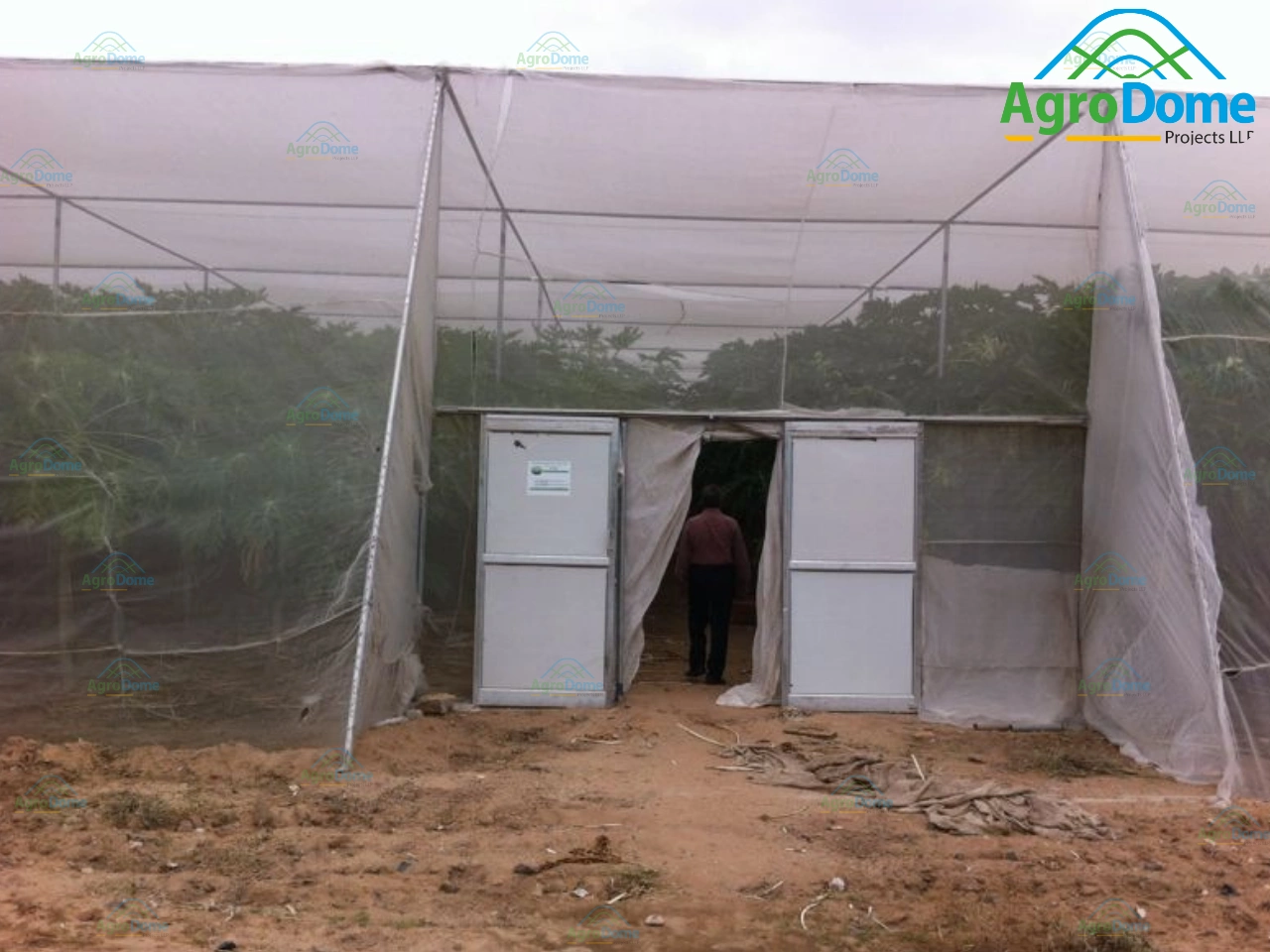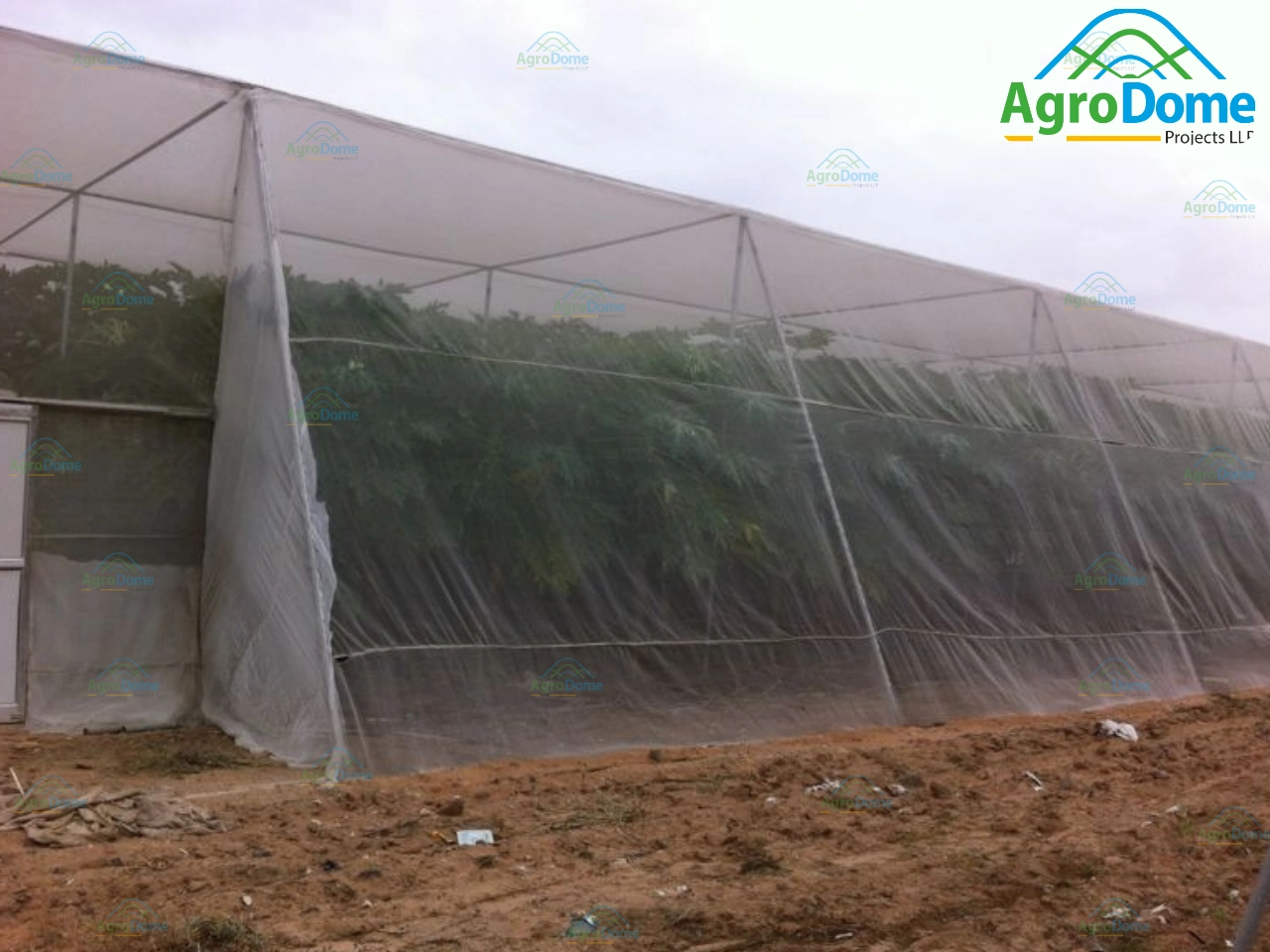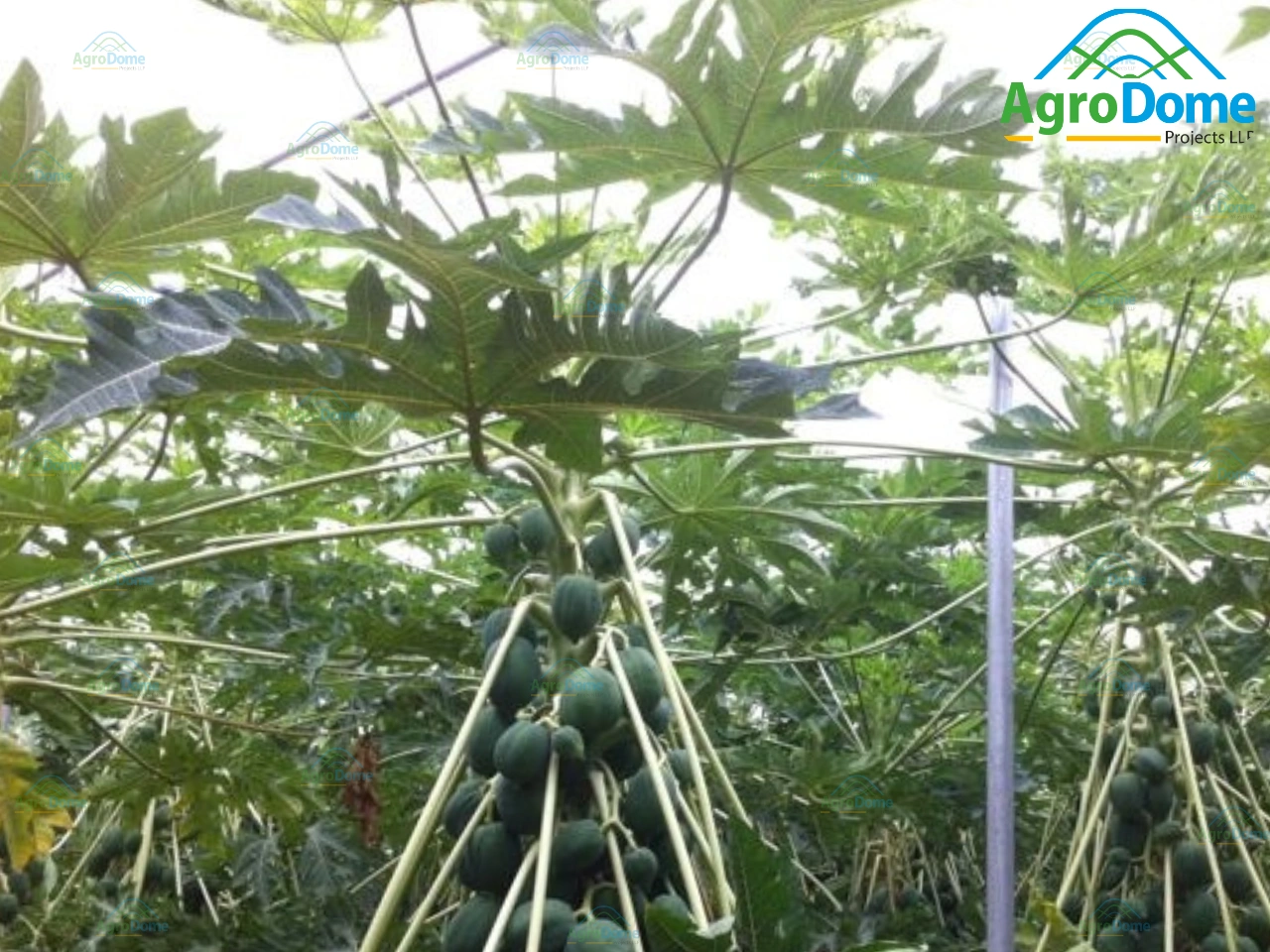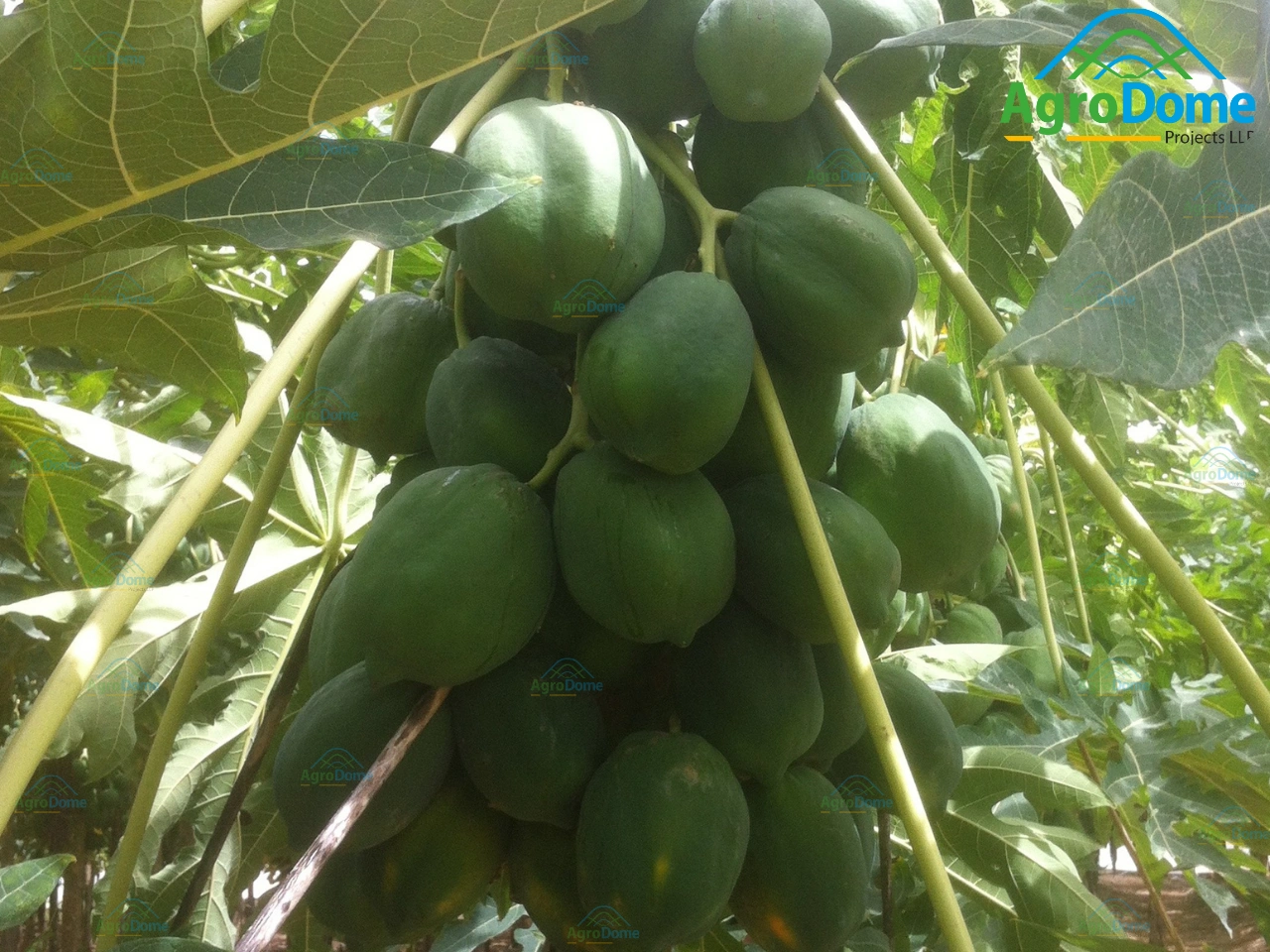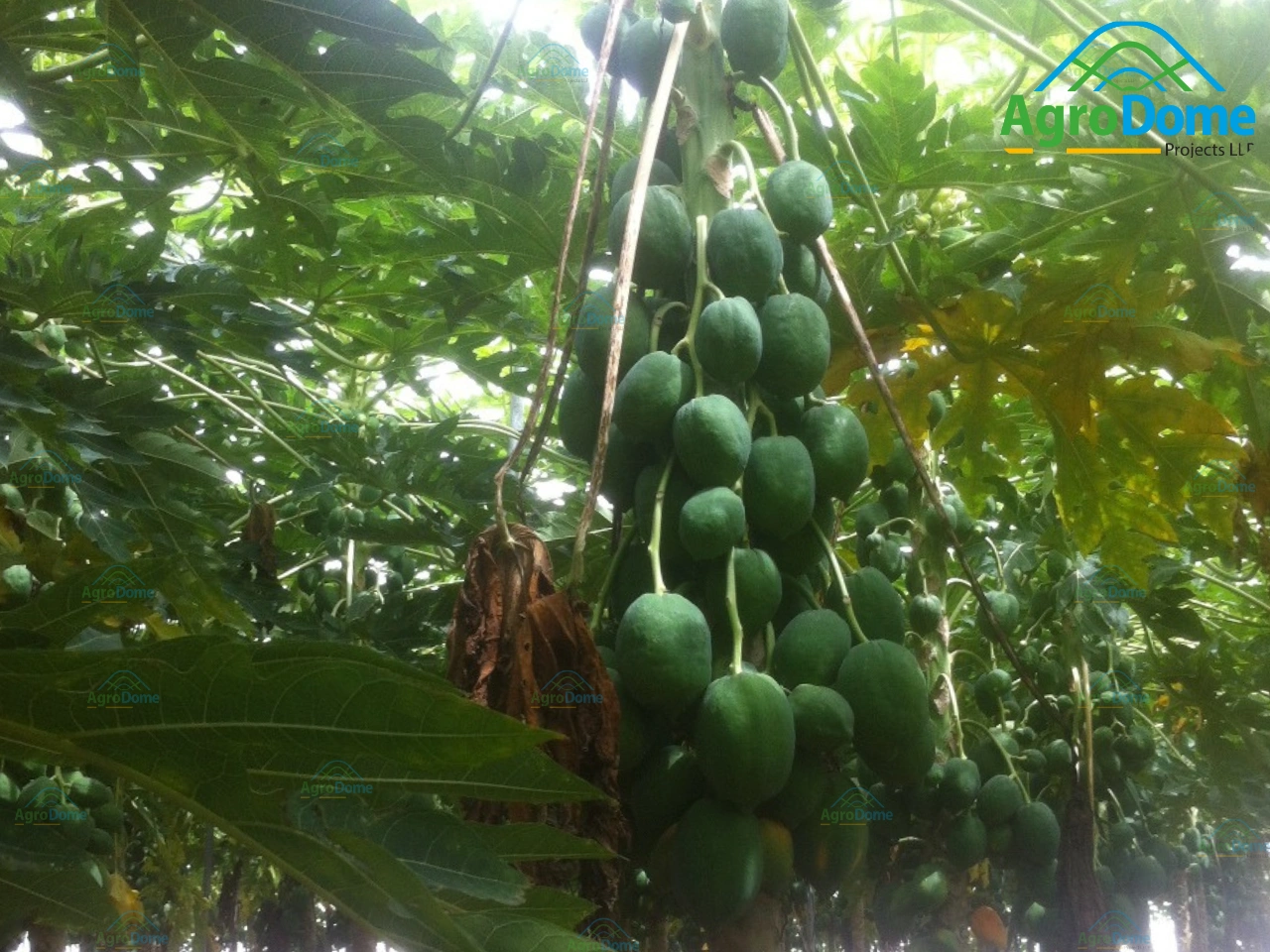Fruit Orchard Structure for Papaya Fruit Farming
Fruit Orchard Structure for Papaya Fruit Farming

Meaning/Definition
The fruit orchard structure for papaya fruit farming refers to the specialized infrastructure and layout designed to cultivate papaya (Carica papaya) in orchard settings. This structure encompasses various components and systems tailored to the specific requirements of papaya cultivation, aiming to optimize growing conditions, manage environmental factors, and maximize fruit production.
Common/ Referred names
The common names for papaya orchard, which are searched frequently by the prospect users: Papaya cultivation techniques, Papaya farming practices, Papaya orchard design, Papaya plant care
Papaya varieties, Papaya crop management, orchard structure for papaya farming, Fruit orchard Structure for papaya farming, Shade net house structure for papaya farming, fruit farming, Fruit orchard Structure for fruit farming, Wire Rope Flat roof net house, Flat Roof Fruit orchard Structure etc.

Technical Specifications
The orchard structure for papaya fruit farming typically includes the following technical specifications
-
Spacing and Layout
Papaya plants are usually spaced approximately 6 to 10 feet apart in rows, with wider spacing for larger varieties and closer spacing for dwarf varieties.
-
Soil Management
Papaya thrives in well-draining soil with good fertility. Soil amendments such as organic matter and fertilizers may be applied to improve soil structure and nutrient levels.
-
Pest and Disease Management
Integrated pest management (IPM) practices are employed to control pests and diseases that affect papaya. This may include cultural practices, biological control, and judicious use of pesticides.
-
Irrigation Systems
Drip irrigation or micro-sprinkler systems are commonly used to deliver water directly to the root zone while conserving water and preventing soil erosion.
-
Windbreaks
Windbreaks such as hedges or barriers may be planted around the orchard to protect papaya plants from strong winds, which can damage the fragile stems and leaves.
-
Harvesting Equipment
Harvesting tools such as pruning shears or harvesting poles may be used to safely harvest ripe dragon fruits from tall trellises.
Applications
The fruit orchard structure for papaya fruit farming is applied in commercial orchards, small-scale farms, and home gardens where papaya cultivation is practiced. It is particularly suitable for tropical and subtropical regions with a warm climate.
Description
| Crop type | Papaya Fruit orchard structure |
| Brand name | AgroDome Projects LLP |
| Roof covering | Shade Net (Mono x Mono) |
| Shading percentage | 10 – 75% Shading |
| Country of Origin | Made in India |
| Built Type | Prefab |
| Brand Name | AgroDome Projects LLP |
| Location | Gandhinagar |
| Application | Banana cultivation, Tissue hardening for banana, Banana Nursery |
Advantages
-
High Yield Potential
Papaya plants are prolific fruit producers, with each plant capable of producing multiple fruit clusters throughout the growing season.
-
Fast Growth Rate
Papaya plants have a rapid growth rate, allowing growers to harvest fruits within a relatively short period after planting.
-
Long Harvest Season
Papaya fruits can be harvested continuously throughout the year in tropical regions, providing a consistent supply of fresh fruit.
Conclusion
In summary, the fruit orchard structure for papaya fruit farming is designed to provide optimal growing conditions, maximize fruit production, and facilitate efficient management practices. By implementing this specialized infrastructure, growers can establish productive papaya orchards capable of yielding high-quality fruits for commercial sale or personal consumption.
Leading the Way in Modern Agriculture
Join us in redefining agriculture through innovation and excellence. Discover the Agrodome Projects LLP difference – where expertise meets commitment, and cultivation reaches new heights.

